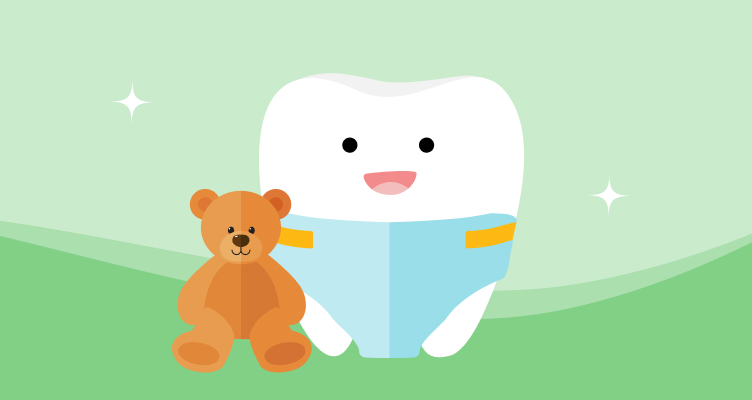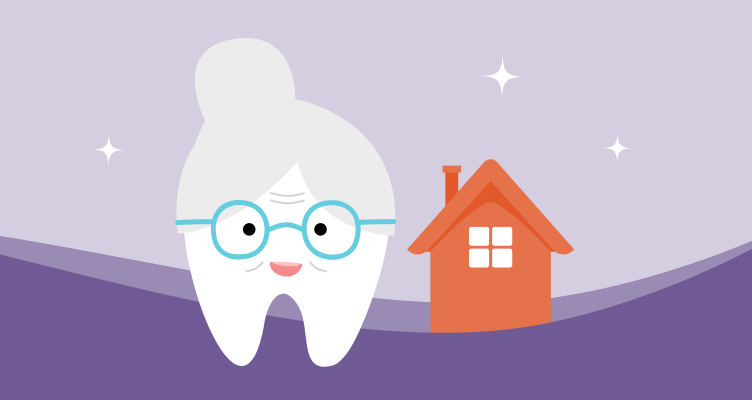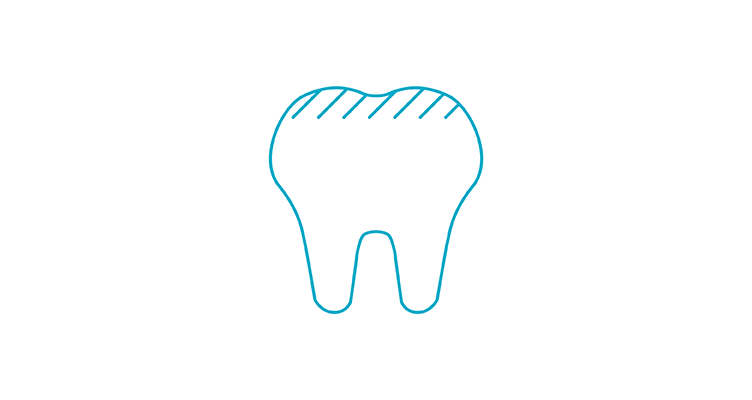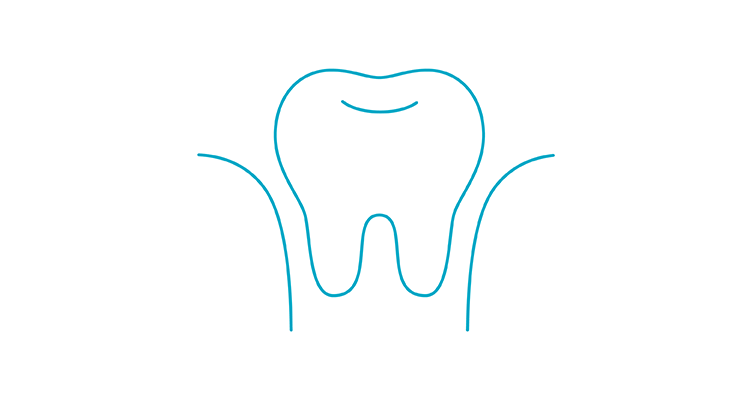How teeth form
The life of a tooth
We all know the stages in a person’s life: A baby is born, grows into an adult, gets old and eventually dies. But did you ever stop to think that teeth go through the same process? They form, can be healthy or sick and, in some cases, even die. Let’s examine the life cycle of a tooth.
Teeth begin to form in the womb just six weeks after conception, appearing as small buds in the tissue that eventually become the gums. Between the third and fourth month of pregnancy, the main parts of a tooth begin to form:
-

Enamel is the hard substance that protects the tooth.
-

Dentin is an inner layer of tissue.
-

The pulp is soft tissue containing blood vessels and nerves.
-

Roots help secure teeth below the gums.
By birth, 20 baby teeth (also called deciduous teeth) are in place below the gumline, and even some permanent teeth have begun forming in the jawbone.
Baby teeth usually don’t start emerging, or erupting, from the gums until babies are about 6 to 12 months old, but this timeline can vary significantly.
From baby to adult: The arrival of permanent teeth
Baby teeth stay in place for five to seven years, when they begin to fall out to make room for the permanent (adult) teeth. In some rare cases, though, permanent teeth may not appear, and baby teeth can remain for many years. This is called retained deciduous teeth.
Why do baby teeth fall out? Baby teeth serve as placeholders for the permanent teeth waiting and developing below. The rising permanent teeth dissolve the baby teeth’s roots, which are reabsorbed into the gums. Without roots to secure them, baby teeth become unstable, loosen and fall out.
As baby teeth fall out, the permanent teeth below them begin take their place. The first baby teeth fall out around the age of 6. As the jaw grows, more permanent teeth come in, with wisdom teeth emerging between the ages of 17 and 25, if at all.
When permanent teeth come in, these newcomers have a distinct look. They may have bumpy edges, called mamelons. These rough edges eventually wear off. Permanent teeth may also have more of a yellow shade than baby teeth. This is because permanent teeth contain more dentin, which is the pale-yellow tissue below the surface of the tooth.
The (often short) life of a wisdom tooth
The last four teeth to arrive, wisdom teeth, begin developing within the jawbone during childhood. This process starts happening under the gums around age 7 to 10. After the crown of the wisdom tooth begins to form, it grows roots, and eventually the tooth pushes through the gums in late adolescence or early adulthood.
In many cases, wisdom teeth (also known as third molars) are removed before they erupt or before they can develop to their full size. When wisdom teeth aren’t removed, the roots can continue growing for years into adulthood..
How teeth age
As a tooth ages, a lifetime of wear and tear takes its toll on its surface, called the enamel. Small hairline cracks in the enamel of the teeth, called craze lines, may appear as the tooth ages. Decades of chewing food and grinding teeth due to stress can also flatten the edges of teeth.
The older a tooth, the more susceptible it becomes to cavities and gum disease. Nerve endings may grow shorter with age, making the tooth less sensitive to pain. Without pain signaling a problem, a small cavity can easily grow unnoticed into a large one. The gumline may recede, which exposes more of the tooth’s enamel. Other changes in the mouth, such a decrease in saliva, can encourage the growth of bacteria and increase the chance of periodontal (gum) disease and tooth decay.
The death of a tooth
When infection and decay are kept in check, a tooth can live a long and healthy life. If not, however, the life of a tooth may be threatened. The pulp of a tooth, made of nerves and blood vessels, is the heart of a tooth. When infection spreads to the pulp, this can kill the tooth. Infection cuts off the blood supply to the tooth and destroys the nerves in the pulp.
Signs of a dead tooth include:
Sometimes a tooth with an infected pulp can be preserved. Root canal treatment removes the dead tissue and nerves but preserves the tooth structure. If the dead tooth is too damaged, though, it may need to be removed. Some options for replacing the tooth include an implant, denture or bridge.
But there’s no reason for your teeth to die before you do. You need proper care and attention to live a long and healthy life, and the same is true for your teeth. With proper dental care, your permanent teeth can stay healthy and vital throughout your life.
What you should know about your dental records
Learn why you might need your dental records and which one you might need.
Does gum disease lead to breast cancer?
Every year, more than 250,000 people are diagnosed with breast cancer in the U.S. Did you know that gum disease may increase your risk?
Cool ideas for hot summer days
Here are 10 great ways to make the most of sunny days and warm night.














